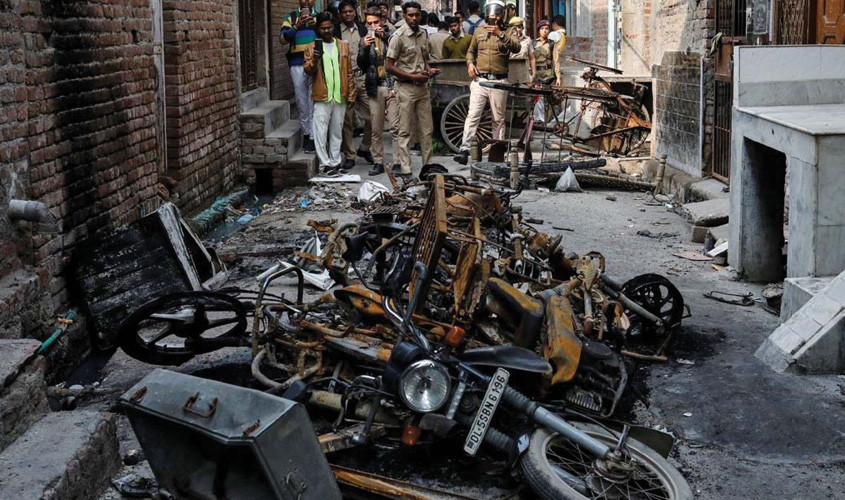New Delhi: Far from the Indian capital, the ripple effects of the recent Delhi riots are being felt in Bangladesh. While the situation in Delhi is now calm and no violence has been reported after 25 February, Bangladesh is witnessing protests. Recently, Delhi witnessed communal violence which left 53 dead and more than 300 people injured.
In Bangladesh, On 6 March, thousands of people took to the streets to protest against Prime Minister Narendra Modi’s planned visit to the country on 17 March. PM Modi was scheduled to visit Bangladesh on 17 March to mark the 100th birth anniversary of the nation’s founding father, Sheikh Mujibur Rahman. The trip has now been cancelled and though both sides have cited the coronavirus scare as the reason behind calling off the trip to Dhaka, sources say that Indian intelligence officials were not sure about the PM’s security in Dhaka.
The rocky relationship between the two countries surfaced after Assam’s National Register of Citizens (NRC) was published and the Citizenship Amendment Act (CAA) came into existence. Recently, the Speaker of Bangladesh’s Parliament cancelled her visit to India and now the country’s major opposition, the Bangladesh Nationalist Party’s protests across the country have intensified the crisis.
Protests in Bangladesh against the CAA and the Delhi riots have so far left 12 people injured. Most of these injuries happened in the southern island of Hatiya, and the Chittagong region.
“Thousands of people gathered outside the Anderkilla Shahi Jame mosque in Chittagong city on 6 March. The protesters were raising inflammatory speeches and communal slogans. A call for revenge was also given during the protest. While the mob kept raising communal slogans, most Hindu residents of the area remained indoors fearing a 1992 like violence in the city,” Saumen Banerjee told The Sunday Guardian in a telephonic conversation. A large protest was also witnessed outside the medieval era Kadam Mubarak mosque.
Banerjee, who belongs to the Chittagong Hill Tracts area and works as a dockyard engineer, said: “Ever since Sheikh Hasina has come to power, she’s been holding back the crazy radicals all the time and people hope that this time again, she will succeed in doing the same. But for now, the situation is tense, at least in the city.
According to Banerjee, Hindus are concentrated largely in Chittagong city and parts of the Chittagong Hill Tracts and historically, these areas have been the hubs of communal tension.
“The Chittagong Hill Tracts and the Chittagong city witnessed violent riots in 1992 that erupted in reaction to the Babri mosque demolition in India. Even after the 2002 Gujarat riots, there was communal violence in our areas. However, this time nothing like 1992 or 2002 has happened, but the Hindu community is apprehensive of communal violence taking place,” Banerjee added.
Amrita Negi, a scholar of South Asian history, told The Sunday Guardian, “Bangladesh has always responded to India’s action and there has been a kind
“The current regime in Bangladesh headed by Shaikh Hasina is pro-liberal and she has taken many steps to ensure less radicalisation. In 2015, Shaikh Hasina initiated amendment in the Constitution to instil secularism and do away with the tag of an Islamic country,” Negi said.
Currently, Hindus comprise around 8.7% of Bangladesh population, according to the Bangladesh Bureau of Statistics census for 2011.

